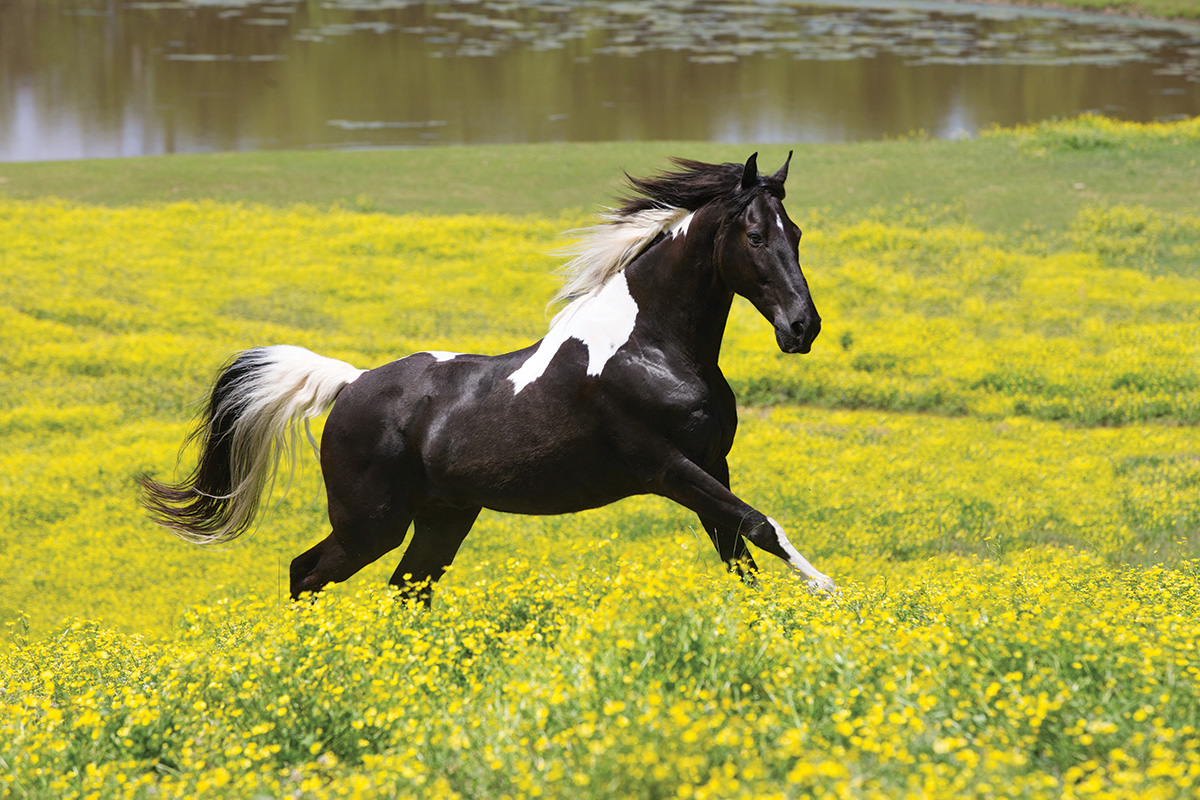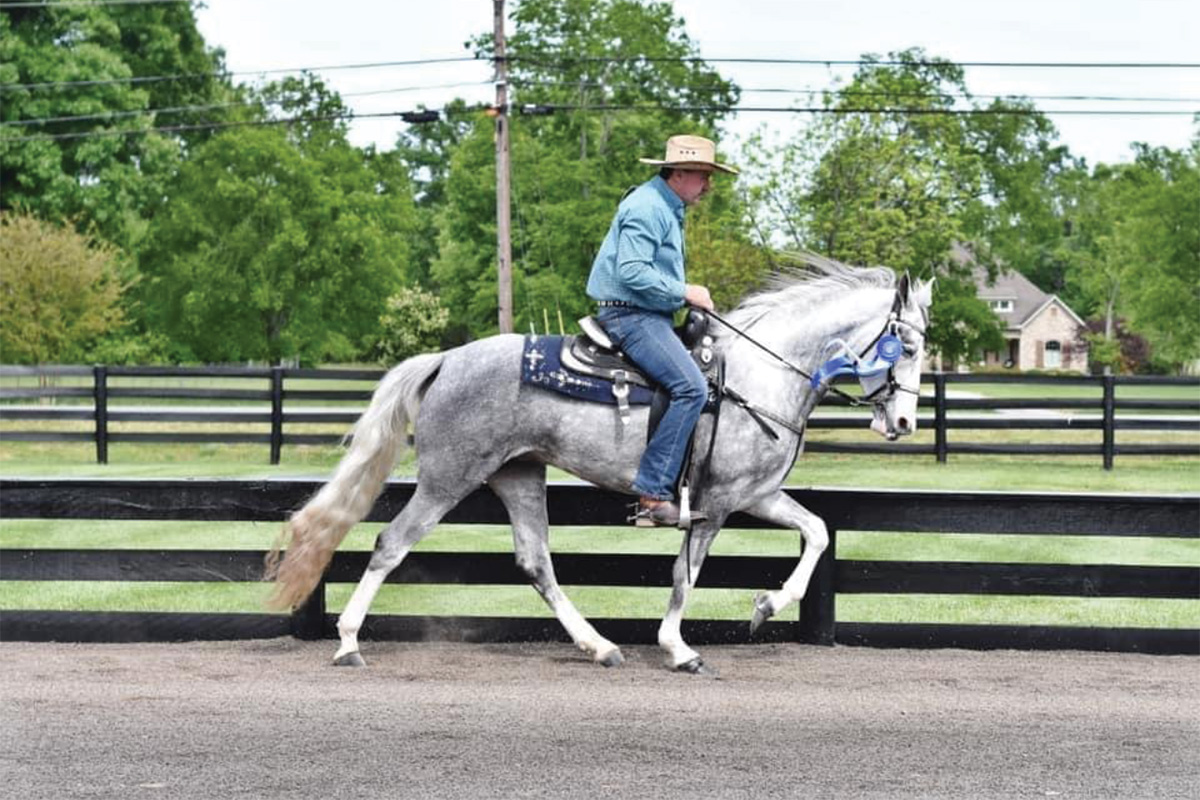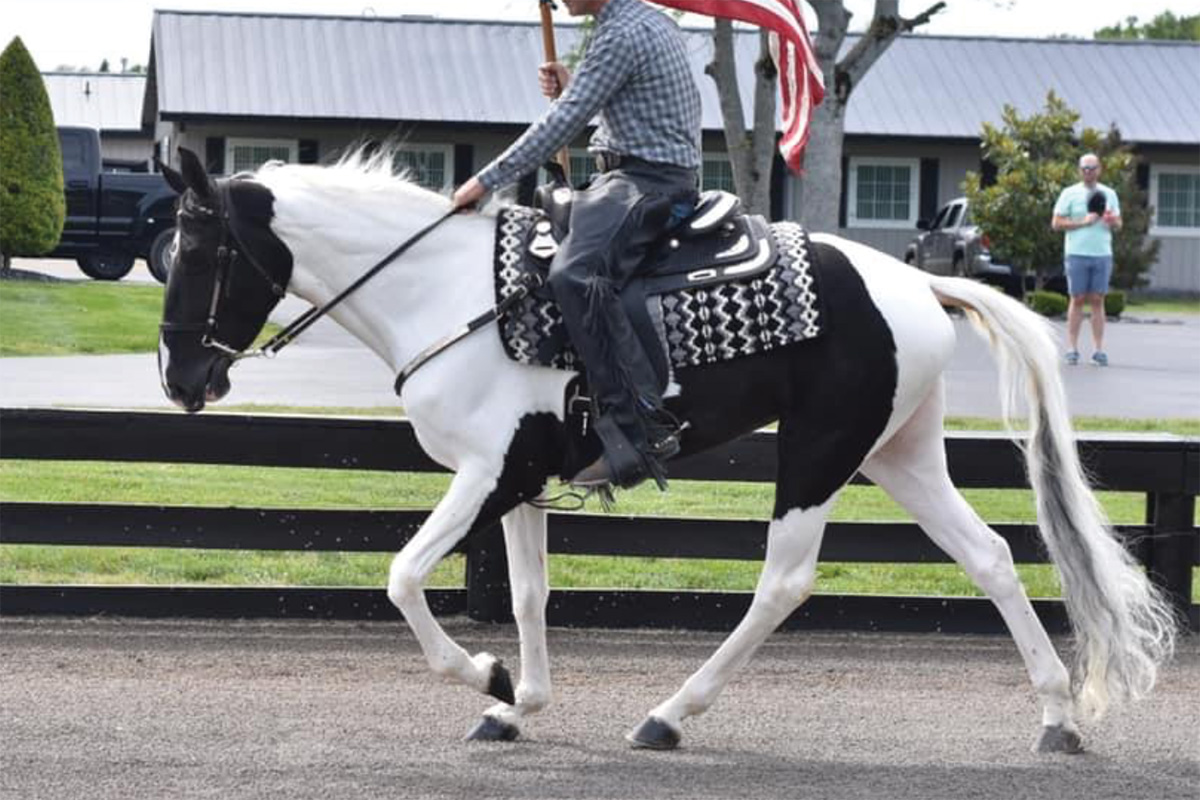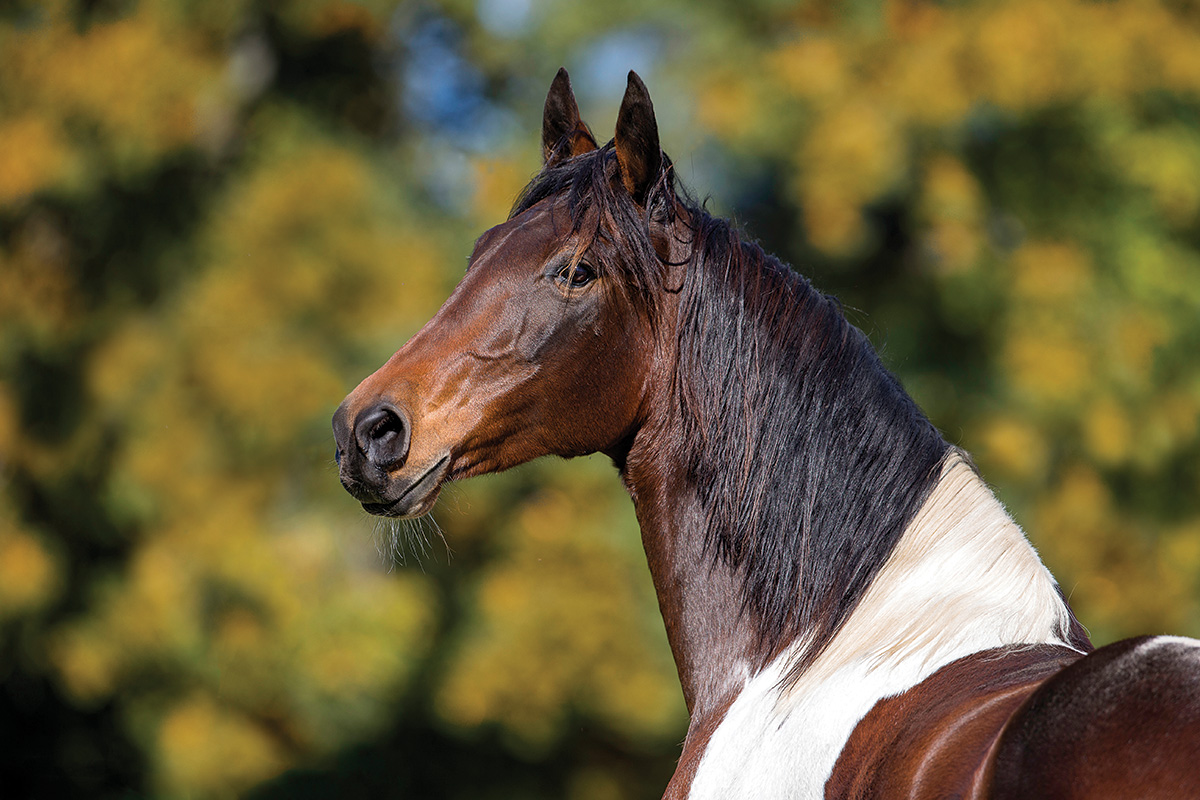
The Spotted Saddle Horse has roots in some of the world’s most intriguing history. When the Spaniards first landed on North American shores, they brought horses with them that would lead to the repopulation of the continent with equines, which had become extinct during the Ice Age. Some of those Spanish horses had pinto markings and some were gaited, and both types passed these traits on to their descendants.
Hundreds of years later and just after the Civil War ended, Southern horsemen began breeding horses with pinto markings to horses with ambling gaits. The goal was to create a flashy-looking, smooth-gaited breed that could comfortably carry a rider for miles through forest trails, over rugged hills and across vast tracts of land. The result of this effort was the Spotted Saddle Horse.
Over the decades, other breeds contributed to this unique horse, including the Standardbred and Morgan. Most recently, the Tennessee Walking Horse, Missouri Fox Trotter, Peruvian Horse and Paso Fino were added to the bloodlines. Today, registered Spotted Saddle Horses can also be crossed with Tennessee Walking Horses, Single-Footing Horses, Rocky Mountain Horses, Kentucky Mountain Horses and Racking Horses. The resulting offspring can be eligible for registration as Spotted Saddle Horses.
What Makes a Spotted Saddle Horse?
To be considered a Spotted Saddle Horse, a horse must possess a number of characteristics, according to both the National Spotted Saddle Horse Association (NSSHA) and the Spotted Saddle Horse Breeders & Exhibitors Association (SSHBEA), the two registries for the breed.
The first and most crucial characteristic is that the horse must be spotted. This means the horse has color above the hock other than facial markings, and is either identified as a tobiano, overo or sabino. This spotting must consist of white and any other recognized horse color.

Solid-colored horses that are born of registered Spotted Saddle Horse parents can be registered with the NSSHA and the SSHBEA, but only as breeding stock. They cannot be shown in classes with spotted horses.
Next, the horse must exhibit a gait other than a trot. This means that instead of trotting, the horse needs to possess a four-beat gait. This gate can be a single-foot, running walk, rack, stepping pace, or another four-beat step.

To be registered with the SSHBEA, horses must have at least one SSHBEA-registered parent. That parent must be a SSHBEA-registered tobiano and must meet all other qualifications in order to be eligible for registration.
Some are also registered as Tennessee Walking Horses, Rocky Mountain Horses or Racking Horses because they carry a large amount of those bloodlines.
A Natural on the Trail
Today, the breed is often used for trail riding, and sometimes compete in North American Trail Ride Conference (NATRC) competitive trail rides. The breed’s smooth gait, willing temperament, and inherent endurance make it a natural for this sport.
The breed is also popular as a show horse and is exhibited in halter and under-saddle classes. The Spotted Saddle Horse World Grand Championship show, held in Tennessee each year, features classes in halter, country pleasure, trail pleasure and a variety of other events that show off the breed’s talents. Some are also used for driving and are broke for carts and wagons.

The NSSHA currently has more than 35,000 Spotted Saddle Horses in its registry. The breed’s smooth gait, gentle temperament and flashy coloring make it an easy choice for people who want an attractive, easy-to-handle horse that provides a smooth and comfortable ride.
Fast FactsHeight: 14.3 to 16 hands Color: Pinto markings consisting of white and another horse color. Breeding stocks may be solid colored. Overall Appearance: The head has a straight or slightly convex facial profile. The neck has a slight arch that leads into long, sloping shoulders. The back is short, and the croup is croup slightly sloping and rounded. The tail is set high. Associations: |
This horse breed portrait appeared in the May 2022 issue of Horse Illustrated magazine. Click here to subscribe!





